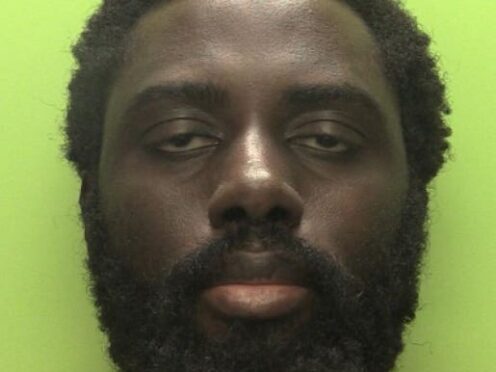
The man who killed three people in a spate of attacks in Nottingham last year should have his sentence changed to one of life imprisonment, the Court of Appeal has heard.
Valdo Calocane was given an indefinite hospital order after admitting the manslaughter by reason of diminished responsibility of Barnaby Webber, Grace O’Malley-Kumar and Ian Coates, and the attempted murder of three others last June.
Prosecutors accepted the 32-year-old’s not guilty pleas to murder charges at his sentencing hearing in January after medical evidence showed he has paranoid schizophrenia.
But Attorney General Victoria Prentis referred the sentence to the Court of Appeal in February, with lawyers telling a hearing on Wednesday that it was “unduly lenient”.
Deanna Heer KC, representing the Attorney General’s Office (AGO), said Calocane should instead be given a life sentence as part of a “hybrid” order, where he would be treated in hospital before serving the remainder of his sentence in prison.
She said: “The exceptional level of seriousness of the offences was such that the case required the imposition of a sentence with a penal element, an element of punishment.
“The harm caused and the harm risked to members of the public by his crimes was extreme.”
Several members of the victims’ families and friends attended the hearing at the Royal Courts of Justice while Calocane attended via video link from Ashworth high-security hospital near Liverpool.
He fatally stabbed 19-year-old university students Mr Webber and Ms O’Malley-Kumar 10 and 23 times respectively as they walked home from a night-out in the early hours of June 13 last year in what prosecutors described as an “uncompromisingly brutal” attack.
He then went on to stab Mr Coates, a 65-year-old school caretaker, 15 times and stole his van which he used to knock down three pedestrians – Wayne Birkett, Marcin Gawronski and Sharon Miller – in Nottingham city centre before being arrested.

He declined to give toxicology samples and gave no comment in police interview.
Calocane’s sentencing hearing was told that multiple medical experts concluded he had paranoid schizophrenia, with the court hearing he had several interactions with mental health services in the months before the attacks.
He was sentenced by Mr Justice Turner to an indefinite hospital order and made subject to further restrictions if he is ever discharged, which must be approved by the Justice Secretary.
One expert, Dr Nigel Blackwood, said the attacks were “entirely driven” by psychosis and that he was in “a severe psychotic episode” at the time.
Dr Blackwood, a professor of forensic psychiatry at King’s College London, also raised concerns that Calocane’s mental condition was treatment-resistant and that he had a “significant concern” about Calocane being given a hybrid sentence.
He said of Calocane: “He has shown a profound lack of insight into the fact that he has an illness.
“Were he to stop taking medication in prison, there is a significant risk of lethal behaviours returning, whether against prison officers or fellow inmates.”
In written submissions, the AGO said: “The learned judge failed to give sufficient weight to the evidence that the offender’s culpability was not extinguished.
“Whilst it is accepted that his ability to exercise self-control and form a rational judgment was substantially impaired, he understood the nature of his conduct and that it was wrong, even in the context of his psychotic beliefs.
“Having identified that the offender’s culpability was low, the learned judge failed to consider the aggravating features which required an uplift from the starting point for a single offence.
“As a result, although the learned judge made a significant uplift to reflect totality, the custodial term failed adequately to reflect the seriousness of the offending.”
If judges rule that a hybrid order should be imposed, they will set the length of time which Calocane should be in custody, with his release then governed by the Parole Board.
The hearing before the Lady Chief Justice Baroness Carr, Lord Justice Edis and Mr Justice Garnham is set to conclude on Wednesday, with a judgment due at a later date.

Enjoy the convenience of having The Sunday Post delivered as a digital ePaper straight to your smartphone, tablet or computer.
Subscribe for only £5.49 a month and enjoy all the benefits of the printed paper as a digital replica.
Subscribe